Gonlung Jampa Ling Monastery is also called Youning Si in Chinese. This once the largest monastery in the region in Amdo Tibet lies against rocky mountain about 23km southeast of Huzhu county and 65km northeast of Xining in Qinghai Province.
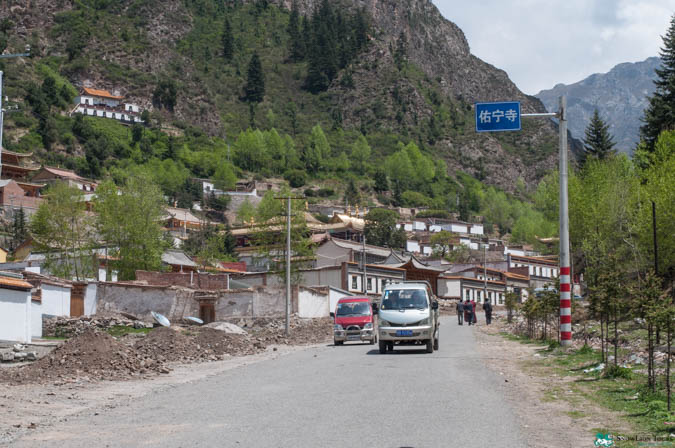
Golung Monastery
Gonlung Jampa Ling is an important Geluk monastery in Amdo that was founded in 1604 by Gelse Donyo Chokyi Gyatso. The site was visited by the Third Dalai Lama and Fourth Dalai Lama prior to its founding. Regarded as one of the four great monasteries of the north of Zongchu River.
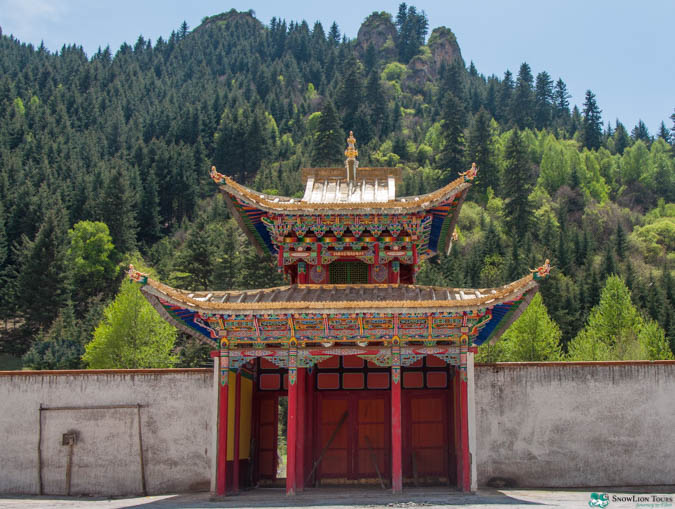
The main gate of Gonlung Monastery in Qinghai.
It is the seat of the Changkya and Tukwan incarnations. The monastery now houses monks of Tu (Monguor), Tibetan and Mongolian origin. Though destroyed in 1724 during the reign of Lhazang Khan and rebuilt in 1732. It was partially destroyed during the Cultural Revolution and reconstruction of the monastery began in 1980.
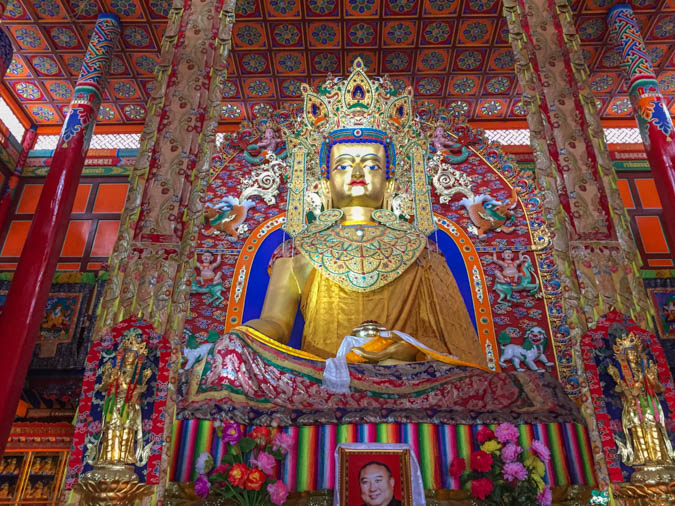
The Buddha Shakyamuni’s Statue in Gonlung Monastery.
Once there are 700 monks in it’s peak, however, this was completely destroyed during Cultural Revolution. Only one temple is left from old monastery to make it as a storage room. Today it is well-known for its new year’s festival as well as masked dance ceremonies that are held twice a year. Here the Tu minority people, who are the Turkic origin but practitioners of Tibetan Buddhism, are to be found in one of the greatest concentrations. Most wear regular western style clothes but you will find older people of Tu, especially Tu Women still wear their traditional Tu dress with green and red strips on the top in these villages around Gonlung Monastery.
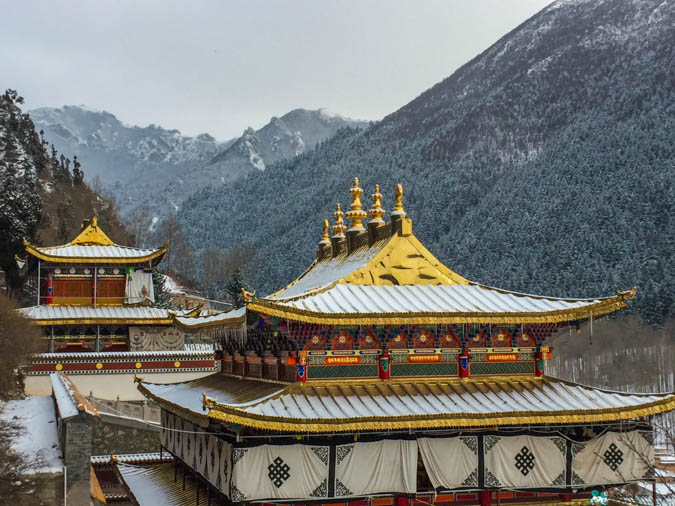
Gonlung Monastery in winter
This monastery’s top Lama has interesting history, so here I took several lines to explain why.
Changkya Rolpe Dorje is the main Lama of the monastery and was born on the 10th day of the fourth (Hor) month of the Fire-Bird year (1717) in Wuwei (formerly known as Liangzhou) near Lanzhou in Gansu. At an early age he was recognized by the first Jamyang Zhepa as the incarnation of the previous Changkya Kutuktu of Gonlung Jampa Ling monastery. At his investiture the Kangxi Emperor sent Kachen Sherap Dargye as his representative.
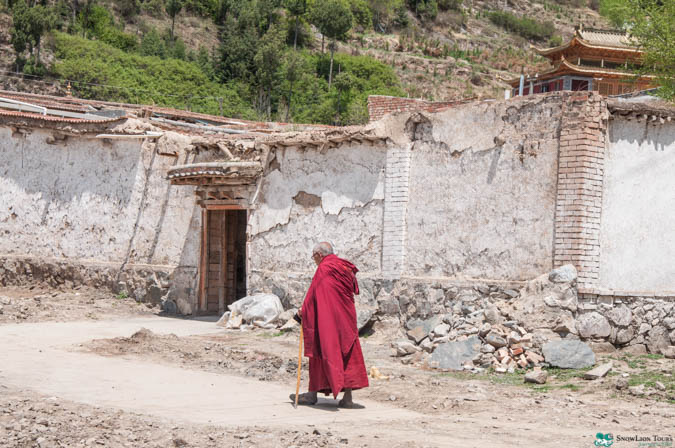
A monk is heading to his resident in Gonlung Monastery.
In 1723, soon after the death of Kangxi, the new ruler, Yongzheng was just establishing his authority, Mongol tribesmen claiming the succession of Gushi Khan, together with their Amdo Tibetan allies and supported by some factions within the monasteries, rose up against the Qing in the region of Kokonor. Yongzheng insisted on violent reprisals and in Amdo the Manchu army, destroyed villages and monasteries believed to have sided with the rebels.
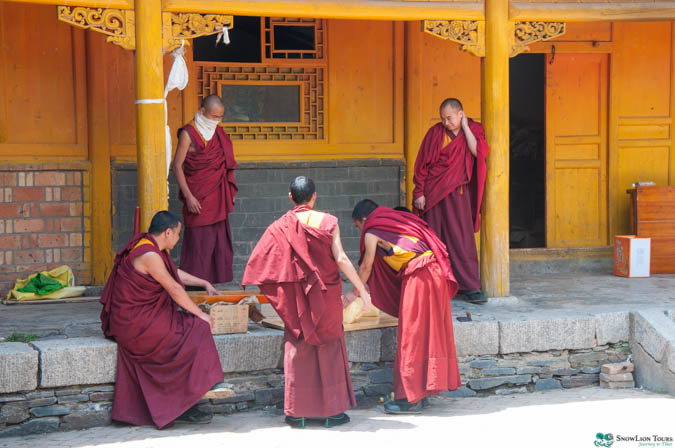
Monks are preparing ritual in Gonlung Monastery.
However the emperor ordered that the seven-year-old Changkya incarnation not be harmed but brought to China as a “guest”. At the Yongzheng Emperor’s court, he was raised and educated to serve as an intermediary between the seat of Manchu power and the Buddhists of Amdo, Tibet and Mongolia. Rolpe Dorje’s monastic teachers included Zhangshu Kachen Sherap Dargye; the second Thuken Hotogtu, Ngakwang Chokyi Gyatso and Atse Choje Lozang Chodzin.
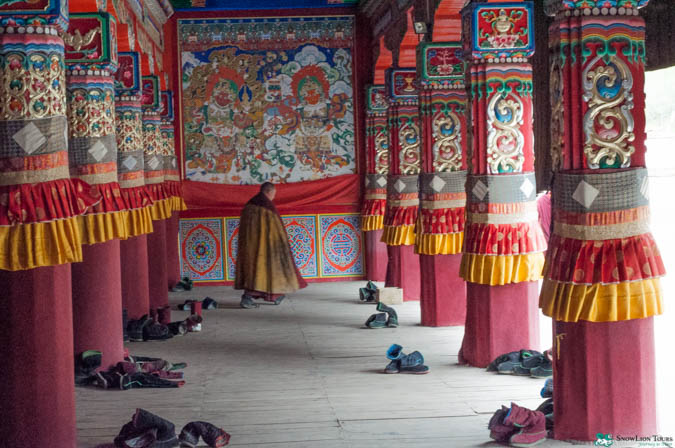
A monk came out of assembly hall in Gonlung Monastery.
Changkya Rolpe Dorje and his teachers realised that in order for the Gelug teachings to flourish in China and Manchuria they would need to be available in Chinese, Mongolian and Manchu and so he began the study of those languages. One of his fellow students was Prince Hungli, who became his friend and eventually the Qianlong Emperor . He also took an interest in Chinese Buddhism and thought that their principle philosophical views had close similarities with those of the Yogachara school. He was also apparently the one who came up with the notion that Dampa Sangye, the Indian founder of the Pacification school in Tibet who supposedly also visited China, and Bodhidharma were the same person.
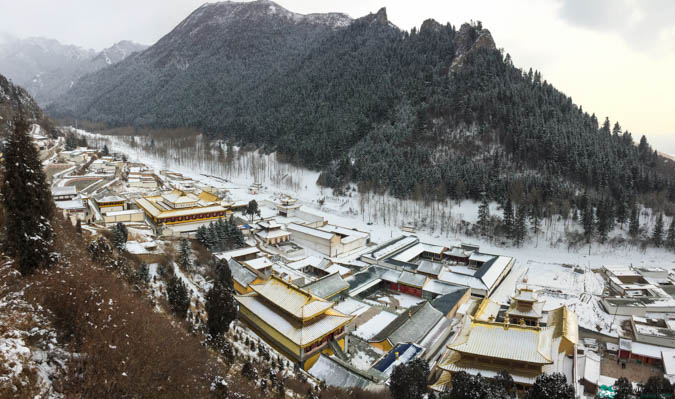
Gonlung Monastery overview in winter
Located in an evergreen forest at the foot of snow mountains, Gonlung Jampaling is a rare gem that few tourists visit. The monastery, a major pilgrimage site along the northern Zongchu River. There is great hiking in the area, and the monastery has many ancient thangka paintings of interest to art lovers.
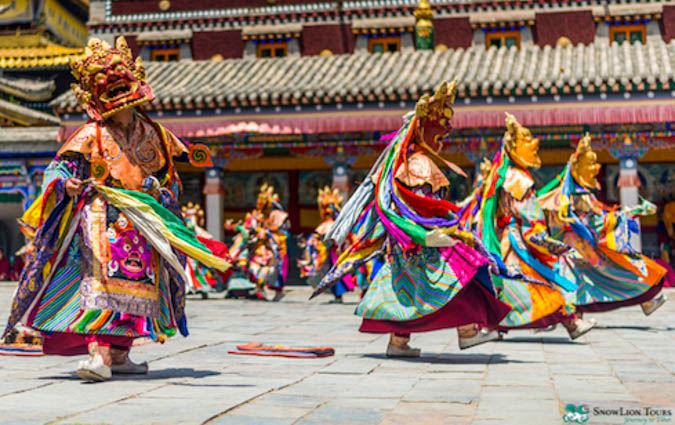
Monks Mask Dance at Gonlung Monastery in Amdo Tibet
There are several famous Meditation caves in this place including Indian Master Atisha, Karmapa as we ll as some other famous figures in Tibetan Buddhism. The highest cave has some bless water dropping from the cave cliffs which considered the nectar of this mediation cave. Local people even collect it in the bottles to bring home.
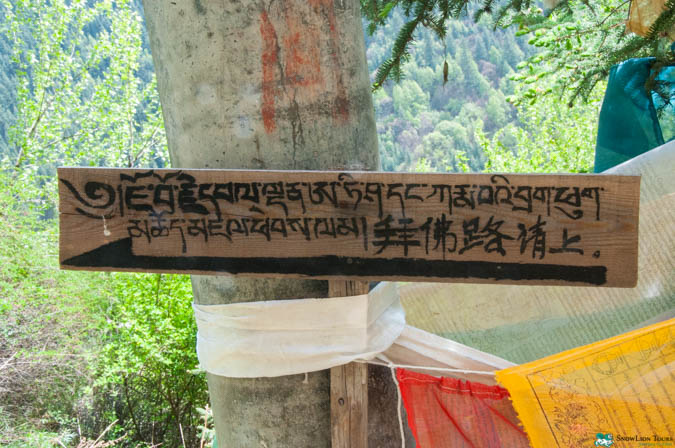
The wooden plate instruct how to get to Atisha and Karmapa’s caves in Gonlung Monastery.
There are two routes to get to this monastery from Xining. You can either drive from Pin’an which is 33km to the northheast or 23km to the southeast of Huzhu county.





